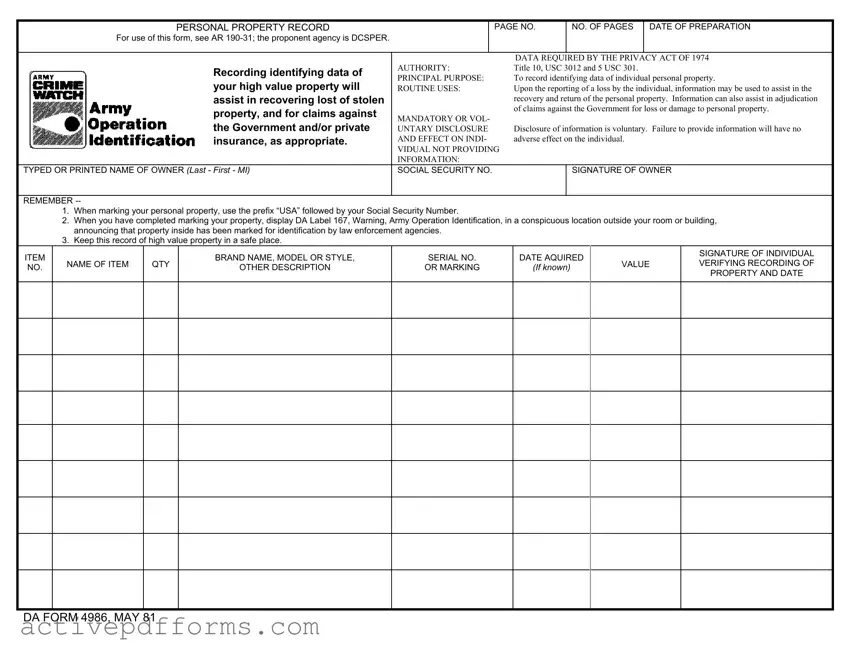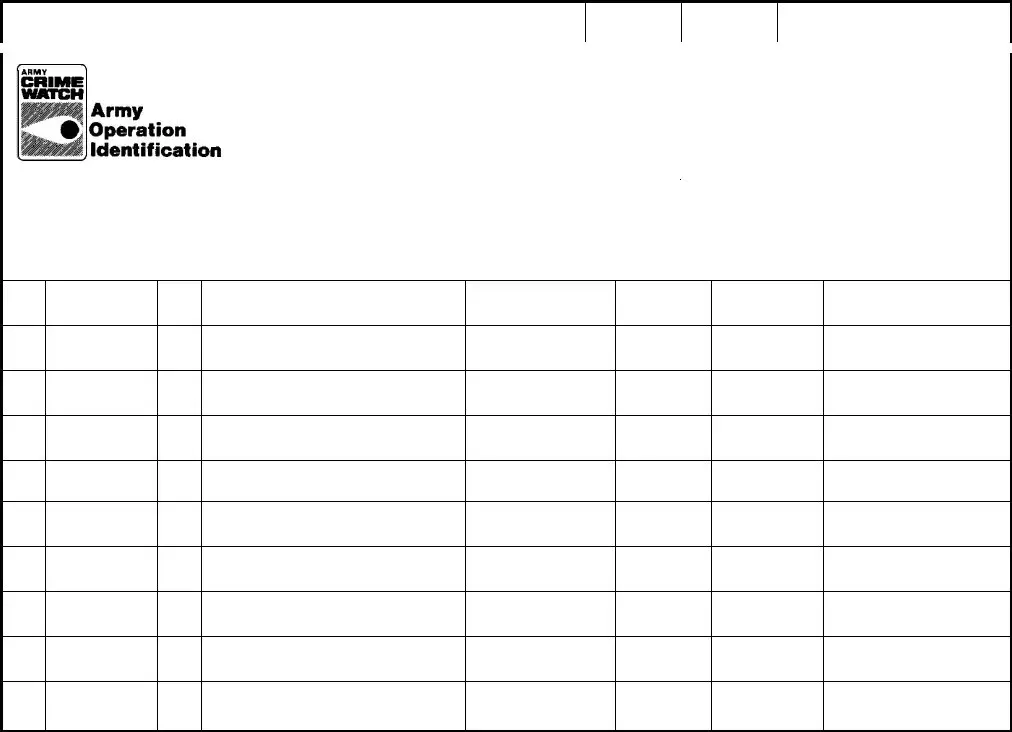When it comes to the DA Form 4986, also known as the Personal Property Record, several misconceptions often arise due to its specific use and requirements. Understanding these misconceptions is crucial for correct form use and ensuring the security of personal property.
Misconception 1: The form is mandatory for all service members.
Many believe that filling out the DA Form 4986 is required for all service members. However, the form's use is voluntary. While highly recommended as a means of documenting and safeguarding personal property, especially high-value items, there is no obligation to complete it unless specifically directed by a commanding officer or unit policy.
Misconception 2: Failure to complete the form will have negative repercussions.
The Privacy Act of 1974 statement on the form clearly states that the disclosure of information is voluntary and that failure to provide information will have no adverse effect on the individual. Contrary to some beliefs, not filling out the form will not result in disciplinary action or negatively impact a service member in any official capacity.
Misconception 3: The form covers insurance for personal property automatically.
A common misunderstanding is that once personal property is documented on the DA Form 4986, it is automatically insured or that the form serves as a type of insurance claim. In reality, the form is intended to aid in the recovery of lost or stolen items and may assist in the claims process with the government or private insurance, but it does not replace or serve as an insurance policy.
Misconception 4: The form is only for military items.
Sometimes there's confusion that the DA Form 4986 is exclusively for listing items issued by the military. While it certainly can and should be used for documenting government-issued equipment of high value, its primary function is for service members to record any personal property of value, including personal items not related to their military service.
Misconception 5: A completed form guarantees recovery of lost or stolen items.
While the DA Form 4986 is an effective tool for tracking and identifying lost or stolen property, completing and maintaining the form does not guarantee that lost items will be recovered. It’s designed to assist in the process by providing vital information that can help law enforcement and recovery efforts, but it cannot ensure the return of personal property.


